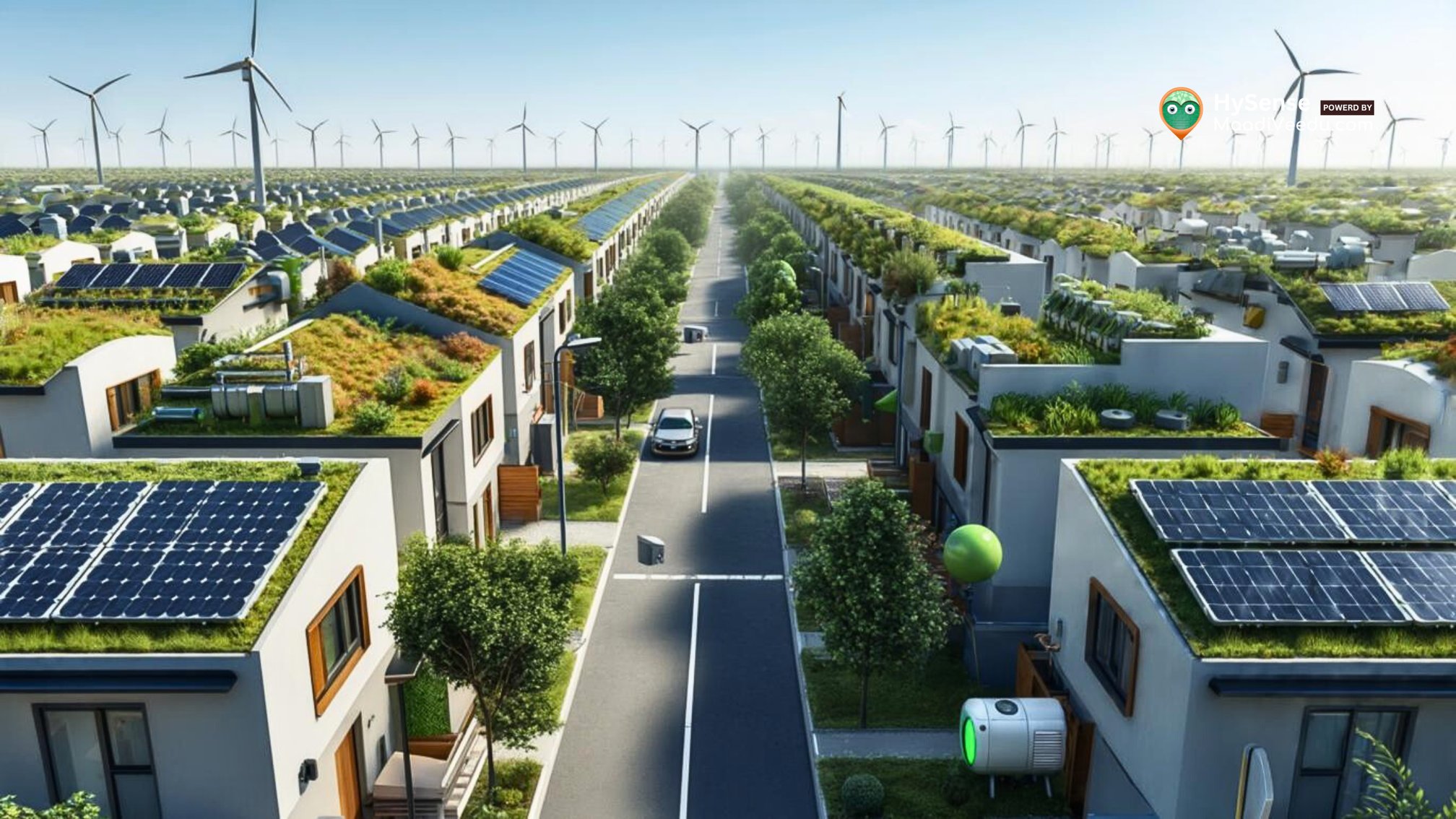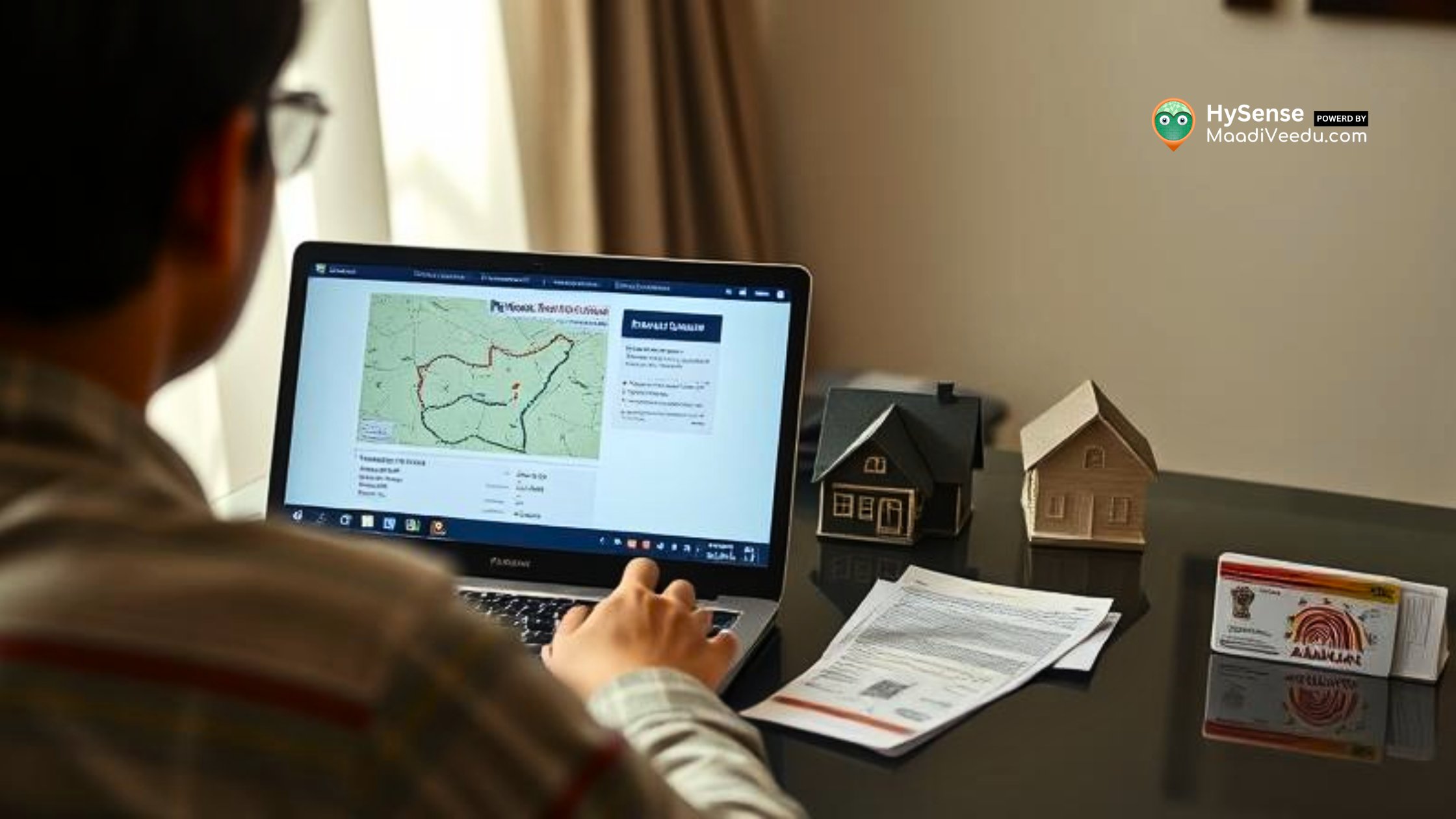How Renewable Energy Solutions Reduce Utility Costs in Government Housing
Learn how solar panels, wind energy, rainwater harvesting, and energy-efficient systems are lowering electricity and water bills in government-sponsored housing.

Table of Contents
Electricity and water bills form a significant portion of household expenses, especially in government-sponsored housing, where affordability is key. With the rising cost of conventional energy sources, integrating renewable energy solutions into housing projects is becoming essential.
Governments are increasingly turning to solar power, wind energy, energy-efficient appliances, water conservation systems, and waste management solutions to lower utility costs for residents. These initiatives not only save money but also promote sustainable living by reducing dependence on fossil fuels. know more
In this blog, we will explore the various renewable energy solutions being implemented in government housing, their benefits, challenges, and how they help common people save money while protecting the environment.
Why Is Renewable Energy Important for Government Housing?
Governments are integrating renewable energy into housing projects for several reasons:
- Reducing electricity costs – Renewable energy solutions provide free power after installation, significantly lowering electricity bills.
- Energy independence – Decreasing dependence on fossil fuels reduces the risk of power shortages and fluctuations in energy prices.
- Government incentives – Many governments provide subsidies, tax benefits, and low-interest loans for renewable energy projects.
- Environmental benefits – Switching to clean energy reduces carbon emissions and pollution.
- Health benefits – Cleaner energy sources improve air quality and reduce health risks related to air pollution.
- Long-term savings – Although initial installation costs can be high, renewable energy systems save money in the long run.
Key Renewable Energy Solutions in Government Housing
1. Solar Power: The Most Widely Used Renewable Energy
Solar energy is the most common renewable energy source used in government housing projects. Solar panels are installed on rooftops to generate electricity for individual homes and community areas.
How It Helps Residents:
- Lower electricity bills – Once installed, solar power provides free energy for decades.
- Net metering benefits – Excess power generated can be sold back to the electricity grid, earning credits for residents.
- Reliable energy supply – Solar power reduces dependency on traditional electricity, reducing power outages.
- Government subsidies – Many governments offer subsidies for solar panel installation, making it more affordable.
- Minimal maintenance – Solar panels require little maintenance and can last over 25 years.
Example: The Tamil Nadu government has installed solar panels on thousands of affordable housing units, reducing electricity costs by 50% for low-income families.
2. Wind Energy: Ideal for Coastal and High-Wind Areas
In regions with strong winds, small wind turbines are installed in housing projects to generate electricity.
How It Helps Residents:
- Provides power even at night – Unlike solar panels, wind turbines work 24/7.
- Less dependency on grid electricity – Ensures continuous power supply in remote areas.
- Eco-friendly – Generates clean energy with no carbon emissions.
- Long lifespan – Wind turbines can last up to 20 years with proper maintenance.
Example: Some government housing projects in Maharashtra and Gujarat have installed wind turbines to provide electricity to common areas like streetlights and community halls.
3. Energy-Efficient Appliances and LED Lighting
Governments promote the use of energy-efficient appliances and LED bulbs to reduce power consumption in affordable housing projects.
How It Helps Residents:
- LED bulbs consume 75% less energy than traditional bulbs, lowering electricity bills.
- Energy-efficient fans and refrigerators reduce power usage and last longer.
- Smart meters help residents monitor and manage their electricity consumption.
- Reduces heat emissions – LED bulbs and energy-efficient appliances generate less heat, keeping homes cooler.
Example: The Pradhan Mantri Awas Yojana (PMAY) promotes LED lighting and energy-efficient appliances in government housing to cut down electricity bills for low-income families.
4. Rainwater Harvesting and Water Recycling
Water bills are another major concern in affordable housing. Rainwater harvesting and water recycling systems help reduce dependence on expensive municipal water supply.
How It Helps Residents:
- Saves water costs – Collected rainwater is used for daily needs like washing, gardening, and toilet flushing.
- Ensures water availability – Reduces the impact of water shortages.
- Less pressure on groundwater sources – Prevents excessive groundwater extraction.
- Improves water security – Rainwater storage ensures a steady supply during droughts.
Example: Chennai’s government housing projects mandate rainwater harvesting systems, helping residents save thousands on water bills annually.
5. Waste Management and Biogas Systems
Governments are incorporating waste segregation, composting, and biogas plants to convert organic waste into useful energy.
How It Helps Residents:
- Reduces garbage disposal costs – Proper waste management reduces the need for frequent garbage collection.
- Generates biogas for cooking – Organic waste is converted into gas, reducing dependence on LPG cylinders.
- Improves sanitation – Proper waste disposal prevents disease outbreaks.
Example: Some housing projects in Karnataka use biogas plants to convert food waste into cooking gas, reducing LPG costs for low-income residents.
Challenges in Implementing Renewable Energy in Government Housing
While renewable energy offers many benefits, certain challenges need to be addressed:
- High initial costs – Installation of solar panels, wind turbines, and water systems requires upfront investment.
- Limited awareness – Many residents are unaware of the benefits and usage of renewable energy solutions.
- Maintenance issues – Lack of trained personnel to maintain and repair renewable energy systems.
However, increased awareness, better policies, and government incentives can help overcome these challenges.
Final Thoughts
Integrating renewable energy solutions in government-sponsored housing is a step toward making homes affordable, energy-efficient, and sustainable. Solar power, wind energy, energy-saving appliances, rainwater harvesting, and waste management solutions are helping residents lower their electricity and water bills while creating an eco-friendly environment.











